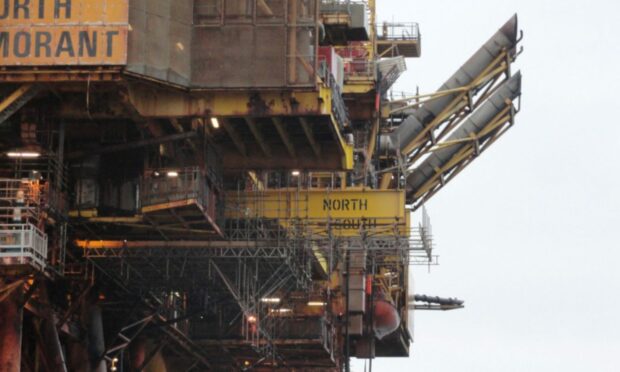The offshore oil and gas industry is to review the weight and size of North Sea workers after concerns were raised over crews fitting into installation lifeboats.
A catalogue of Health and Safety Executive (HSE) concerns were revealed by Energy Voice, sister website to The Press and Journal, earlier this week.
It was found that management on Taqa’s North Cormorant platform “were not confident” its lifeboats could fit the stated number of passengers.
More than half the crew weighed 98-142kg (216-313lbs) during the November inspection, up from the average weight of 98kg (216lbs) during a capacity review in 2011.
Always enough capacity, says Taqa
Taqa told Energy Voice the issue was closed and there is always enough capacity on lifeboats.
It also said a revision to maximum personnel on board limits is in place, taking into account data on weights.
But there is still a wider issue over the body mass index (BMI) of offshore workers, and whether similar problems may emerge elsewhere.
Mark Wilson, health, safety and environment director at trade body Offshore Energies UK (OEUK), said the matter had been brought to his attention – and that of the HSE.
His team is revisiting data to ascertain the average weight and size of workers.
Mr Wilson said: “The last time we did this was… 10 years ago, so it’s overdue.”
He would not discuss Taqa’s case specifically, but in terms of lifeboat capacity more widely he noted that it comes down to more than just space on seats.
“There’s a number of factors we’ve got to ensure we look at,” he said, adding: “It’s not just about the safety piece (in the Energy Voice report).
“There’s a piece… about stretchers and, if you have an injury… being able to move somebody from A to B.”
Larger workers must sit in window seats on helicopter trips offshore
In 2015 thousands of offshore workers had their shoulder sizes measured in advance of new helicopter safety regulations.
The “extra-broad” (XBR) rules mean those classed as XBR must sit in seats closest to a window in order to escape during an emergency.
This latest question around BMI would not impact those rules but has potential to do so in other areas.
Mr Wilson said: “There is one example, for instance, where if you look on the step of a helicopter, it has a maximum weight capacity now.
“And there are some individuals who work in our offshore operation who are large by virtue of the fact they exercise a lot, so we just need to make sure we get the right information to hand.”
Right data – right actions for lifeboats and offshore workers
Arming the industry with data will inform the right actions, Mr Wilson said.
He added: “We’re not proposing for one minute putting a cap on BMI, for instance, for the offshore aspect for weight, but recognising that if we are seeing, based on 2022 and 2023 data, a shift in the weight of individuals, then we, of course, need to respond to react appropriately.
“We’re taking this risk-based approach, so we actually understand and quantify the magnitude of a problem.
“And then (ascertain) is it a concern that actually becomes an issue that we’re going to deal with, and hence the reason we are taking our time to get the information to hand.
“But, of course, we are actively engaged with the Health and Safety Executive on this.”

